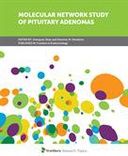Explore

Molecular network study of pituitary adenomas
0 Ungluers have
Faved this Work
Login to Fave
Pituitary adenomas are a category of neoplasms with a high degree of heterogeneity that occur in the central regulatory organ pituitary, which plays important roles in the hypothalamus–pituitary-targeted organ axis systems that impact on important physiological functions of human body. Rapidly developed multi-omics and systems biology are impacting on treatment of pituitary adenomas and changing the paradigms from the traditional single-factor strategy to a multi-parameter systematic strategy. A series of molecular alterations at different levels of genes (genome), RNAs (transcriptome), proteins (proteome), peptides (peptidome), metabolites (metabolome), and imaging characteristics (radiome) that resulted from exogenous and endogenous carcinogens are involved in pituitary tumorigenesis and mutually associate and function in a molecular network system, thus determines the difficulty in the use of a single molecule as biomarker to clarify its molecular mechanisms, and to predict, prevent, diagnose, and treat a pituitary adenoma. Of them, molecular network study plays central roles. A key molecule-panel biomarker that is derived from molecular network is necessary for accurately clinical practice of a pituitary adenoma. The modern multi-omics, computation biology, and systems biology technologies lead to the possibility in recognizing really reliable molecular-panel biomarker for research and clinical practice in pituitary adenomas.
This book is included in DOAB.
Why read this book? Have your say.
You must be logged in to comment.
